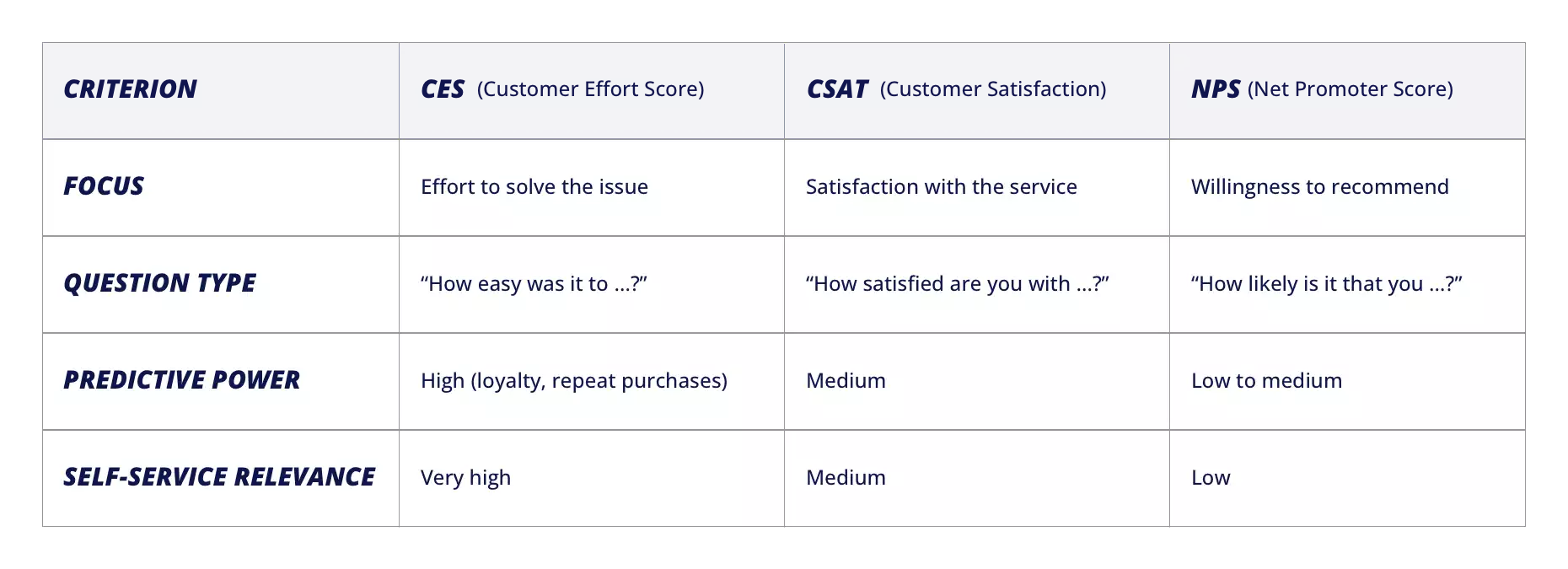How can the actual quality of service in customer contact be measured — beyond satisfaction and recommendation?
The Customer Effort Score (CES) provides a differentiated key figure for this purpose. It is becoming particularly important for Internet Service Providers, public utilities and network operators who digitize their processes and use automated Customer Self-Service.
What is the Customer Effort Score?
The Customer Effort Score (CES) measures the effort, which customers must take in order to solve a problem. The central question is usually:
“How easy was it for you to resolve your issue with [company]? ”
Responses are on a scale — typically from 1 (very easy) to 5 or 7 (very difficult). A low value signals: Customer service works smoothly, processes are understandable and intuitive.
Calculation example:
- 100 reviews on a scale of 1-5
- Total reviews: 220
- CES = 220/100 = 2.2
Target values for digital service providers: CES < 2.5.
Why is CES particularly relevant for Internet providers?
In technical customer service, every second often counts. Router problems, WiFi problems or access to the customer portal — the faster the solution, the lower the effort.
Low CES has been shown to correlate with:
- Higher customer satisfaction
- Lower Churn rate (emigration)
- Fewer Hotline contacts
CES can be specifically optimized, particularly in self-service environments (e.g. apps or portals) — for example by:
- A Setup assistant for Internet access
- Automated problem-solving features
- Customer portals with direct access
When should the CES be held?
- Right after a service interaction, e.g. via app, chat or hotline
- After a self-service process, e.g. automated troubleshooting
- Regularly to identify potential improvements in the customer journey
CES vs. NPS vs. CSAT: What is the difference?

→ What is a net promoter score?
How does self-service improve CES?
Digital self-service solutions offer key benefits with regard to CES — for example through:
- 24/7 availability → no waiting in the hotline
- Interactive problem solving → Reduction of inqueries
- Automated setup → e.g. WiFi or router
- Seamless handover to support when needed
Typical features of a self-service app like MyProvider reduce costs and thus increase CES:
What are the benefits of a low CES?
- Cost savings in customer service
- Higher conversion and contract extension
- Better brand perception
- Fewer escalations and negative reviews
CES therefore delivers objective clues on it how customer-friendly digital processes really are — and whether investments in self-service are having an effect.
Conclusion: Customer effort score as a control parameter in digital customer service
CES is a key indicator for companies that want to design scalable and user-centered service processes. Internet providers, public utilities and network operators in particular benefit from systematic CES monitoring — ideally integrated into modern self-service platforms.
Learn more about the benefits of self service apps.






